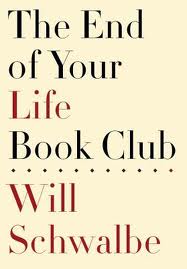Chiang, Ted. Exhalation: Stories. New York: Knopf 2019. Print
The story I have to tell is truly a strange one, and were the entirety to be tattooed at the corner of one's eye, the marvel of its presentation would not exceed that of the events recounted, for it is a warning to those who would be warned and a lesson to those who would learn.
Description:
I'll say right off the bat that I am a huge fan of Sci-Fi/Fantasy short story writer Ted Chiang and his mind-bending, exhilarating, and thought-provoking tales. His latest collection, Exhalation: Stories, continues his explorations into the world of the past, present and future in completely unexpected ways ranging from time travel to philosophy to alchemy to who knows what. Just plunge in to each story and hang on.
In "The Merchant and the Alchemist's Gate," an alchemist invents a time portal that, when one steps through it, travels exactly twenty years into the future. A common story, perhaps, but in Chiang's capable hands, the story keeps growing, re-shaping itself, bringing characters into completely different roles whether in the past, present, or future where they could possibly (or actually) influence the course of history. What would you do with such an invention? Sit back and find out, but it won't be what you expected.
"Dacey's Patent Automatic Nanny" describes the first automated child-raising robot, an experiment to provide all necessities to a baby to ensure the perfect upbringing. Of course, there are problems. But it is the calm, intellectual reasoning behind this story that separates if from a run-of-the-mill robot gone wrong tale.
Then there is a story, "The Great Silence" narrated by a parrot who wonders why mankind seeks intelligent life in the galaxy when he and his fellow sentient parrots are sitting right next to them, about to be made extinct before given the opportunity to talk with humans. Next, in the story "Omphalos," an anthropologist finds fossils (and a mummified man with no belly button) that prove Earth and all its inhabitants were created fully formed on a specific date, not evolved as is widely believed. How does mankind handle this sort of information?
There's a description of a hand-held device that proves all actions in the world are already fated, not the result of free will. In one brilliant story, a man examines his own robotic brain to realize the human mind is gradually slowing down and their seemingly eternal life is very slowly dying.
Each story really makes readers concentrate, ask themselves questions, and try to understand implications of plots and actions that change the thinking of human since the world begin. Fantastic.
So buckle up and open you mind in every story to new directions and challenges to preconceived notions. Like his first collection, Stories of Your Life and Others (which contains "Story of Your Life" about extraterrestrial contact used as the basis for the Amy Adams film, Arrival). Highly recommended for all readers.
____________________
If this book interests you, be sure to check out:
If this book interests you, be sure to check out:
Chiang, Ted. Stories of Your Life and Others.
Excellent, thought-provoking Sci-Fi stories involving alien landing on Earth, the construction of the tallest building in history that hits a previously-unknown solid ceiling enclosing the world, and many more exciting, fascinating stories.





